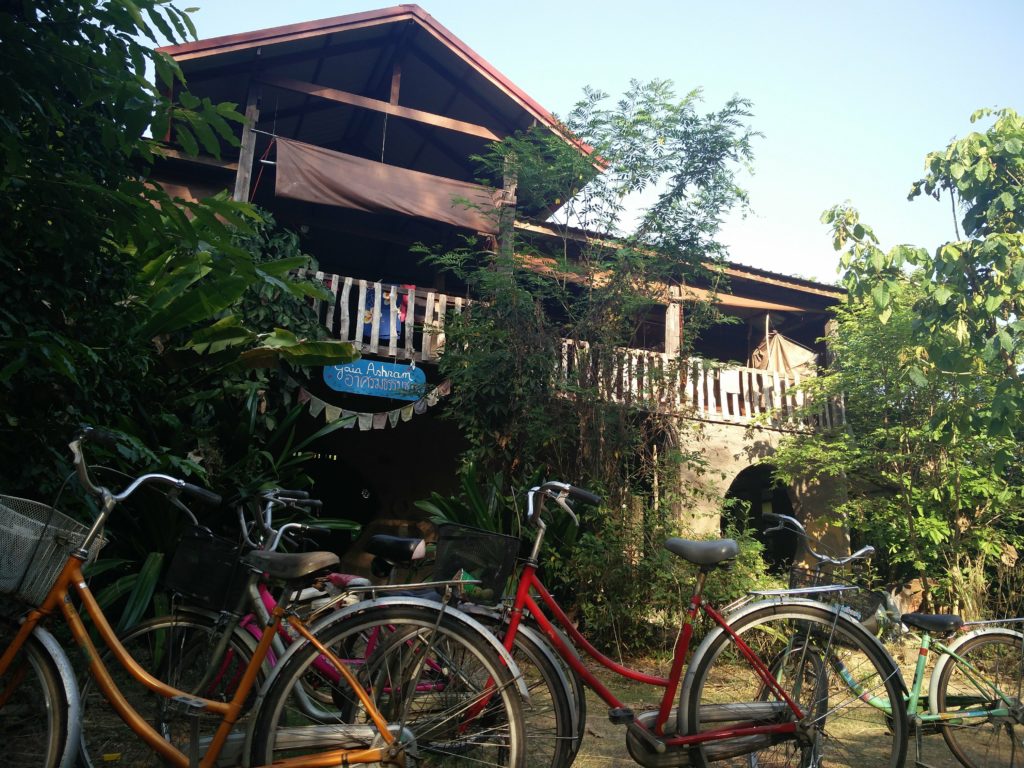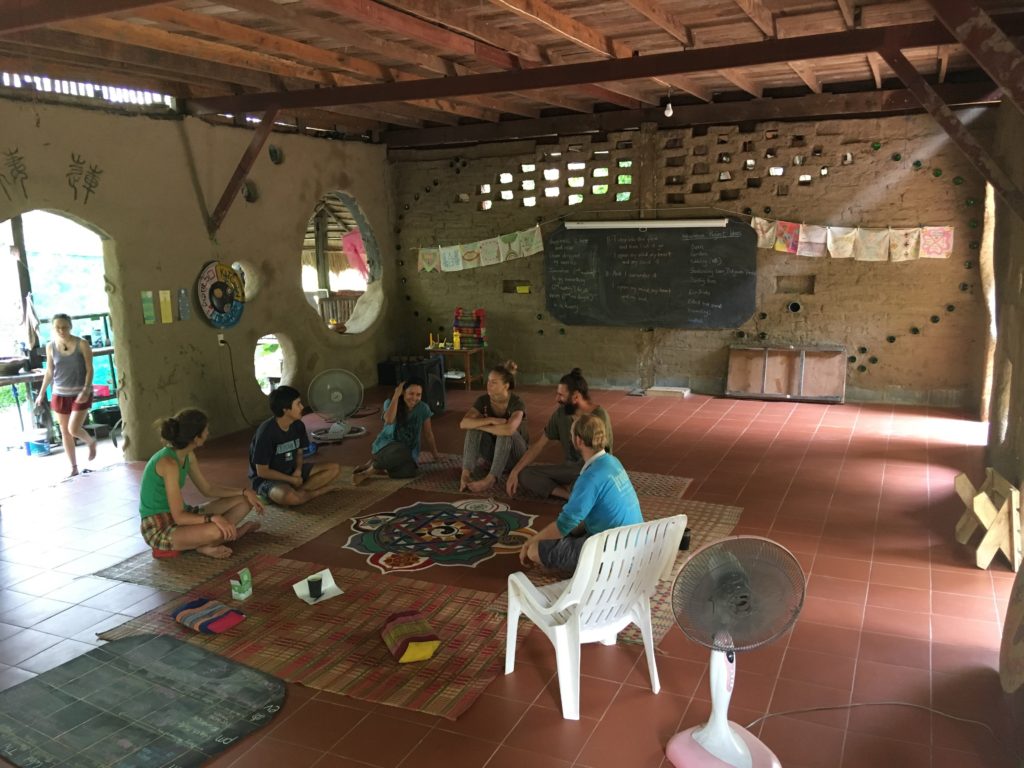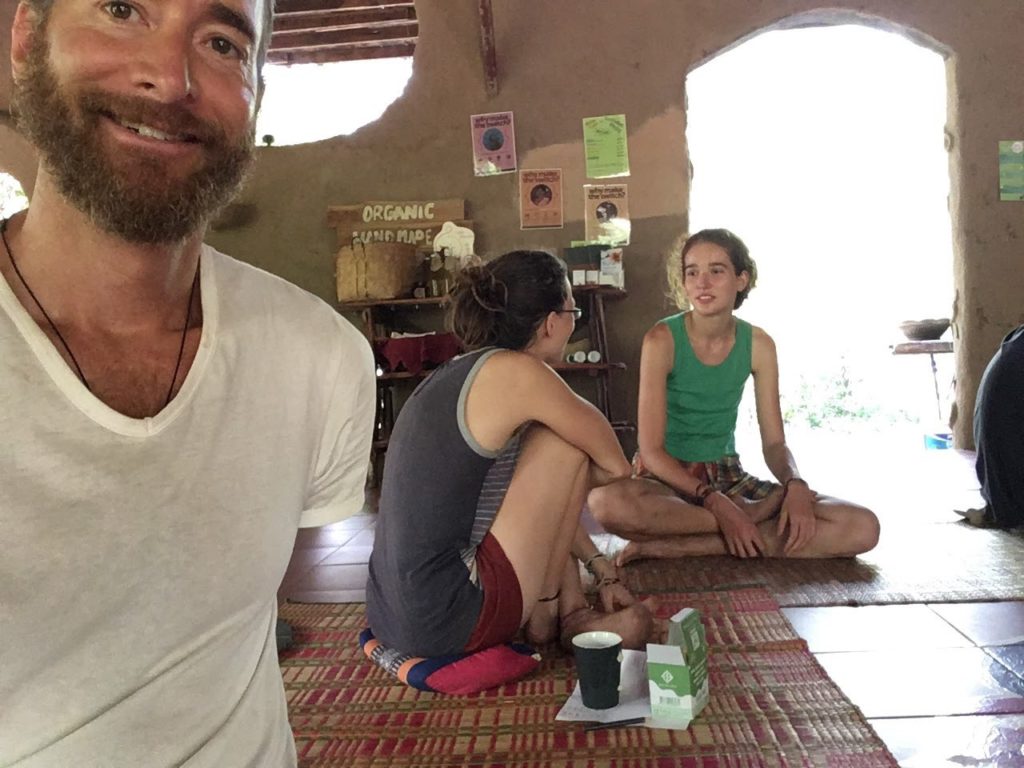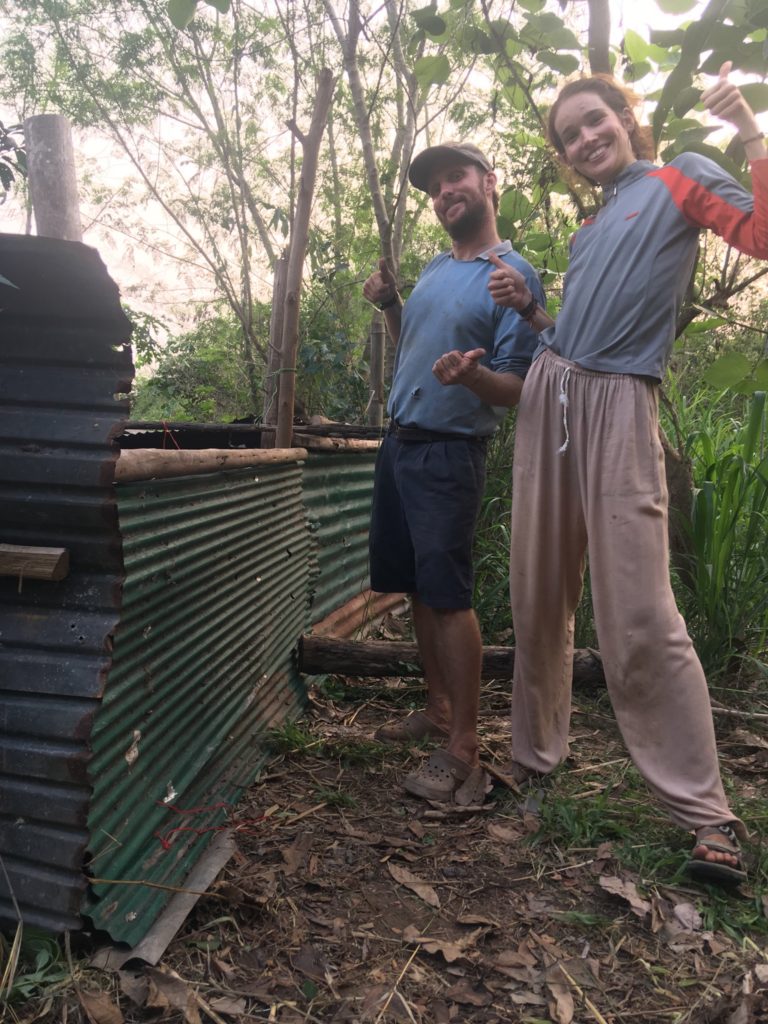Ecovillages, Intentional Communities and Ecoliving

What are the 5 things you need to know about ecovillages, ecoliving and intentional communities?
In the last article you learned about the problems that Ecovillages can solve.
Before you dive into my experience at an ecovillage, I think it’s worthwhile to clear up some of the basics around ecovillages, intentional communities and ecoliving. Things like… what do these things mean, anyway?
So then, without further ado, here you go…
The 5 things you need to know about ecovillages and ecoliving (and intentional communities)
1. What is an ecovillage, an intentional community – and ecoliving?

When turning once again to Google, I found a few definitions, one of which seemed most relevant:
An ecovillage is an intentional, traditional or urban community that is consciously designed through locally owned participatory processes in all four dimensions of sustainability (social, culture, ecology and economy) to regenerate social and natural environments.
– Global Ecovillage Network
Concretely, ecovillagers seek alternatives to ecologically destructive electrical, water, transportation, and waste-treatment systems, as well as the larger social systems that mirror and support them. Many see the breakdown of traditional forms of community, wasteful consumerist lifestyles, the destruction of natural habitat, urban sprawl, factory farming, and over-reliance on fossil fuels as trends that must be changed to avert ecological disaster and create richer and more fulfilling ways of life.
– Wikipedia
It would then seem to make sense that Ecoliving would be to live in a way that’s in line with the principles of an ecovillage – sustainably and regeneratively supporting nature, culture, ecology and economy.
And an intentional community is much more broad than an ecovillage:
An intentional community is a planned residential community designed from the start to have a high degree of social cohesion and teamwork.
– Wikipedia
2. Where did ecovillages come from? (History)
I’ll be honest… This is the boring part so I’ll spare you most of the details and quickly sum things up.
In the 60s there was a growing interest in communal living and then in the 80s this eventually turned into semi-intentional communities around co-housing…which means that people were just living in the same place, albeit without as much intention perhaps as our modern ecovillage…which came around in the early 90s and gained a lot of popularity after the pivotal Findhorn conference in 1995 in which its reported that they turned away hundreds of applicants. Out of the conference was born the
Global Ecovillage Network (GEN) which now lists hundreds of ecovillages around the world.
In fact, I found the Gaia Ashram Ecovillage where I stayed through the GEN website (at ecovillage.org).
3. What is an ashram?

This is something I’d only briefly heard about before my investigation into ecovillages and coming across the Gaia Ashram Ecovillage. ..So I went ahead and looked it up:
Traditionally, an ashram-Hindi (Sanskrit ashrama or ashramam) is a spiritual hermitage or a monastery in Indian religions.
– Wikipedia
Well, that’s not very helpful! What else is there about ashrams? How about this:
An ashram would traditionally, but not necessarily in contemporary times, be located far from human habitation, in forests or mountainous regions, amidst refreshing natural surroundings conducive to spiritual instruction and meditation. The residents of an ashram regularly performed spiritual and physical exercises, such as the various forms of yoga. Other sacrifices and penances, such as yajnas were also performed. Many ashrams also served as gurukulas, residential schools for children under the guru-shishya tradition.
Interesting. I really like the part about being far from humans in forests or mountains in natural surroundings. With this definition I can see why Gaia calls itself an ashram because of its natural setting and regular meditation practice.
4. How can you find an ecovillage near you?

This is the easy part. All you have to do is search the web. Like I mentioned, I found Gaia through GEN – at ecovillage.org.
And there are other places you can search. You can check out the Foundation for Intentional Communities.
Take a look at these sites… and plan to visit an ecovillage or intentional community near you!
5. What can you expect if you join an ecovillage?

Good question! I really don’t know. I’ve only been to one and I’m sharing my experience…although I do plan to visit more and share those experiences as well.
What I can tell you is that it was a very educational, entertaining, enriching and overall fun experience. And it was challenging. I did some strenuous and uncomfortable work at Gaia.
And that’s what you’ll get to hear about more in upcoming articles.
Bonus: What else is there to know about ecovillages?

Ecovillages can be healthy and healing. Simply by getting out of your stressful world and back to nature can be very therapeutic. You can escape the pollution, noise, and stress of your everyday life…and instead immerse yourself in a natural, peaceful environment where you can let go of the stress.

Ecoliving is fun. You get to meet new people and do new things…things that you’ll read about more in upcoming articles.
Until then…
